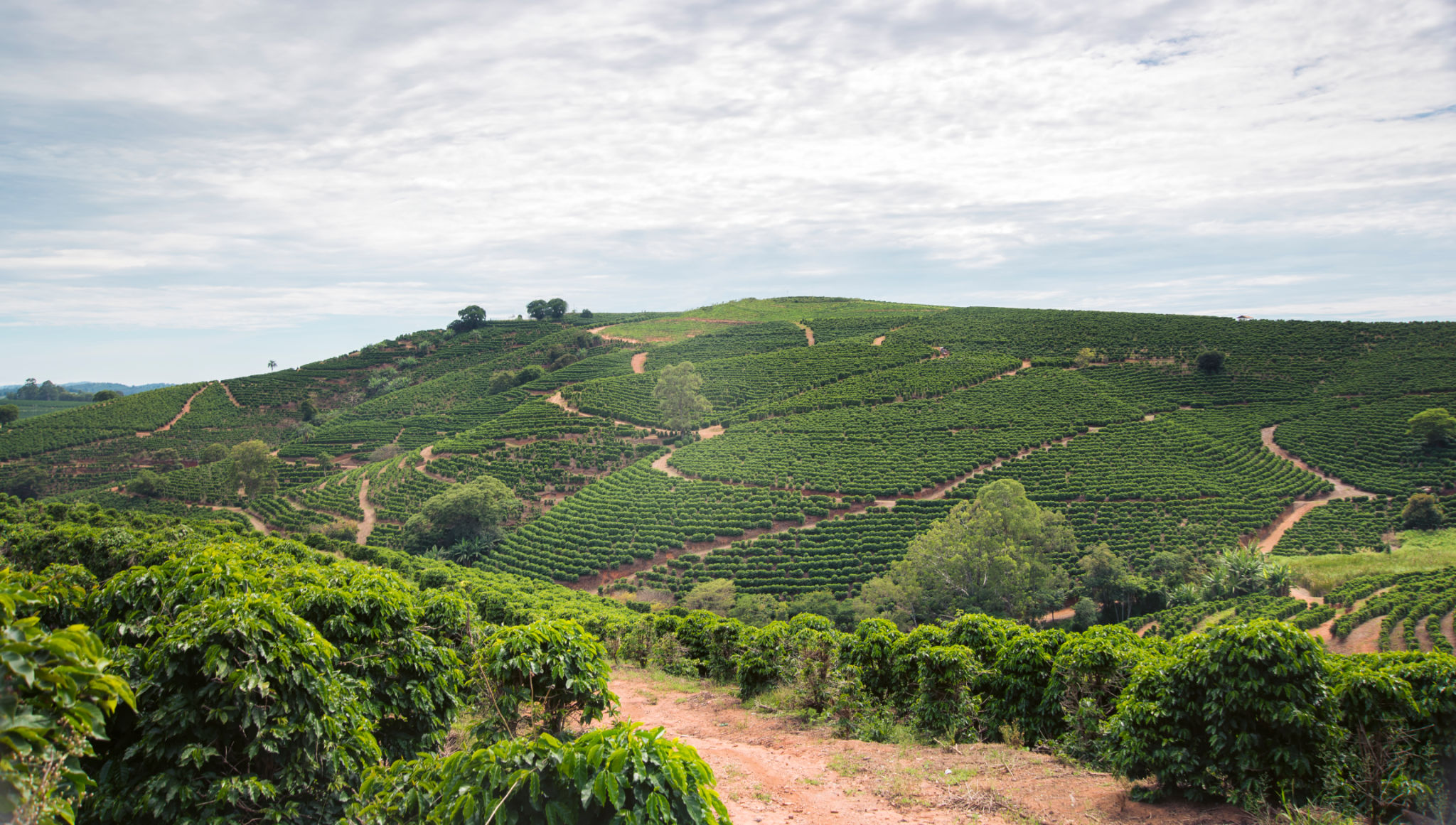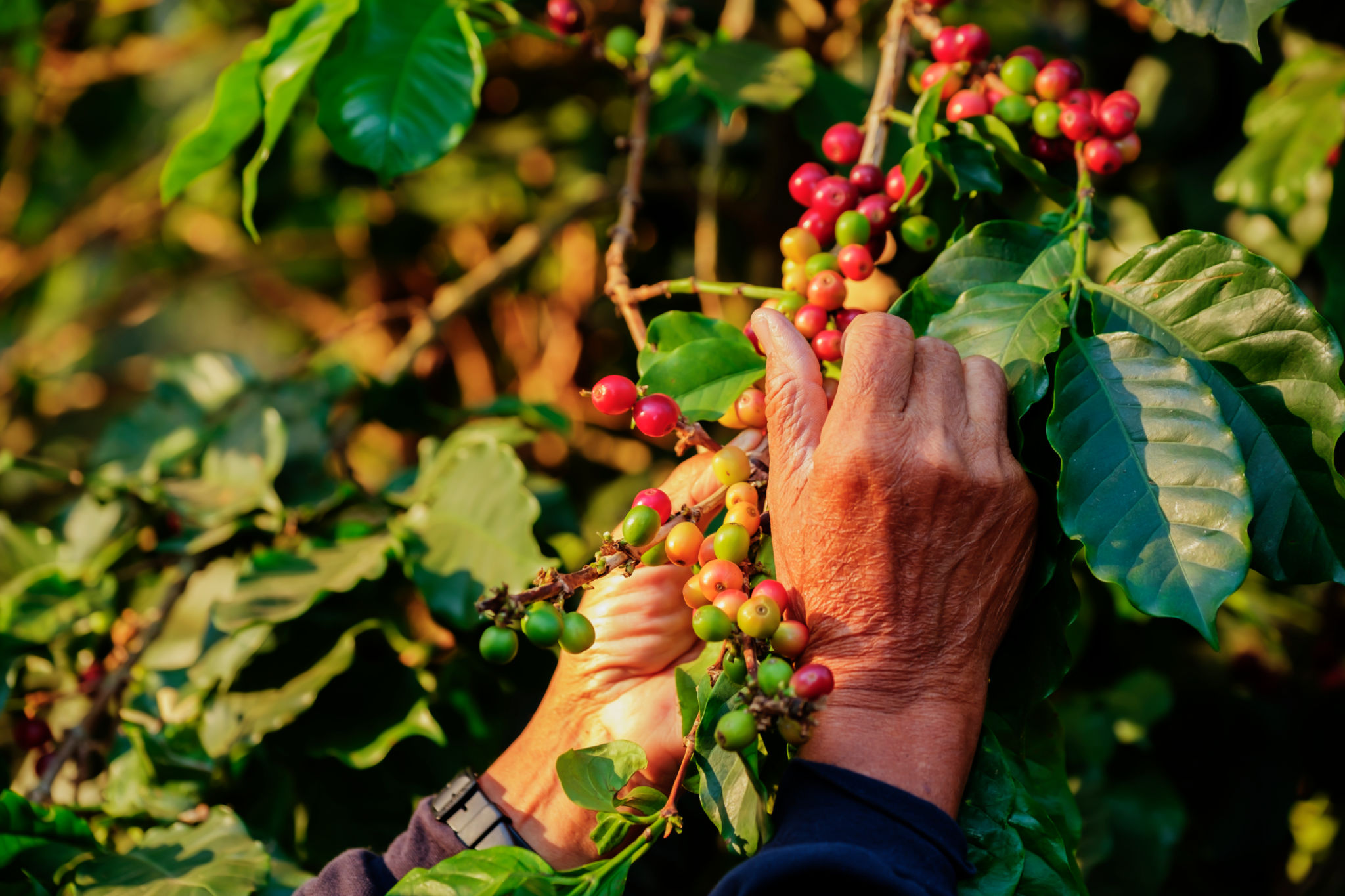The Journey of Green Coffee Beans: From Farm to Cup
The Origins of Green Coffee Beans
The journey of green coffee beans from farm to cup is a fascinating process that begins in the lush, mountainous regions of coffee-growing countries. Coffee plants thrive in the "Bean Belt," which spans regions around the equator. These areas provide the perfect climate for coffee cultivation, with the right balance of temperature, rainfall, and altitude.
Coffee beans are actually seeds found inside the coffee cherry, a fruit that changes from green to bright red when ripe. Harvesting is a critical step in the journey, as only ripe cherries are picked to ensure the highest quality. Different farms employ various methods, such as selective hand-picking or mechanical harvesting.

Processing Green Coffee Beans
Once harvested, the coffee cherries must be processed to extract the beans. This involves one of two primary methods: dry or wet processing. In dry processing, cherries are spread out in the sun to dry before being hulled to remove the outer layers. Wet processing involves removing the pulp and fermenting the beans before washing and drying them.
After processing, the beans undergo hulling to remove any remaining parchment or husk. The result is green coffee beans, which are sorted by size, weight, and color. This meticulous sorting ensures only the best beans continue their journey.

Transporting and Roasting
Green coffee beans are then bagged and transported internationally. Often stored in jute or sisal sacks, these beans must be kept in the right conditions to maintain their quality during shipping. Once they reach their destination, they are ready for roasting.
Roasting is a transformative stage where green coffee beans develop their distinctive flavors and aromas. Roasters apply precise heat levels to bring out different flavor profiles. This process requires expertise to balance time and temperature perfectly.

Brewing the Perfect Cup
Once roasted, coffee beans are ground according to the desired brewing method, whether it's espresso, French press, or pour-over. The grind size plays a crucial role in determining the flavor and strength of the final cup.
The brewing process combines ground coffee with water, allowing the flavors to extract and create a delicious cup of coffee. The choice of water temperature, brewing time, and coffee-to-water ratio all impact the taste.
Sustainability in Coffee Production
Sustainability is becoming increasingly important in the coffee industry. Many farms are adopting eco-friendly practices to protect the environment and support local communities. This includes using organic farming methods, promoting fair trade practices, and investing in renewable energy sources.

Consumers can support these efforts by choosing ethically sourced and sustainably produced coffee. This not only helps preserve the planet but also ensures that farmers receive fair compensation for their hard work.
The Final Sip
The journey of green coffee beans from farm to cup is a complex, multi-step process that involves careful attention to detail at every stage. Understanding this journey enhances appreciation for each sip of coffee and highlights the dedication of countless individuals who contribute to delivering your favorite brew.
Next time you enjoy a cup of coffee, take a moment to consider its beginnings on a distant farm and the meticulous processes it underwent to become your morning companion.